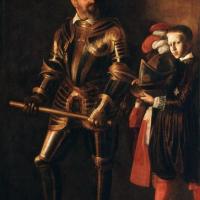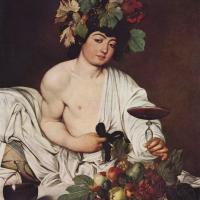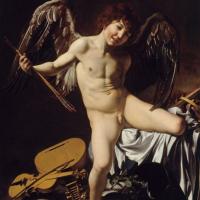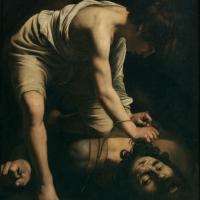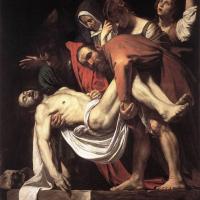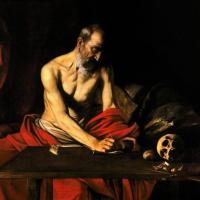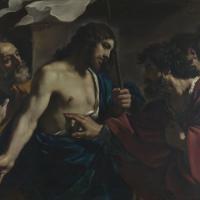Caravaggio
Alof De Wignacourt
$480.00
Bacchus
$450.00
Cupid As Victor
$480.00
Entombment of Christ
$480.00
Medusa
$510.00
Portrait Of Pope Urban VIII
$480.00
Saint Jerome Writing
$480.00
The Sick Bacchus
$480.00
Caravaggio
Caravaggio (1571-1610)
Michelangelo Merisi (Michele Angelo Merigi or Amerighi) da Caravaggio (28 September 1571 – 18 July 1610) was an Italian painter active in Rome, Naples, Malta, and Sicily from the early 1590s to 1610. His paintings combine a realistic observation of the human state, both physical and emotional, with a dramatic use of lighting, which had a formative influence on Baroque painting.
Caravaggio (Michelangelo Merisi or Amerighi) was born in Milan, where his father, Fermo (Fermo Merixio), was a household administrator and architect-decorator to the Marchese of Caravaggio, a town not far from the city of Bergamo.
Following his initial training under Simone Peterzano, in 1592 Caravaggio left Milan for Rome. In Rome there was demand for paintings to fill the many huge new churches and palazzos being built at the time. It was also a period when the Church was searching for a stylistic alternative to Mannerism in religious art that was tasked to counter the threat of Protestantism. Caravaggio's innovation was a radical naturalism that combined close physical observation with a dramatic, even theatrical, use of chiaroscuro that came to be known as tenebrism (the shift from light to dark with little intermediate value).
An early published notice on Caravaggio, dating from 1604 and describing his lifestyle three years previously, recounts that "after a fortnight's work he will swagger about for a month or two with a sword at his side and a servant following him, from one ball-court to the next, ever ready to engage in a fight or an argument, so that it is most awkward to get along with him." In 1606 he killed a young man in a brawl, possibly unintentionally, and fled from Rome with a death sentence hanging over him.
Already evident was the intense realism or naturalism for which Caravaggio is now famous. He preferred to paint his subjects as the eye sees them, with all their natural flaws and defects instead of as idealised creations. This allowed a full display of his virtuosic talents. This shift from accepted standard practice and the classical idealism of Michelangelo was very controversial at the time. Caravaggio also dispensed with the lengthy preparations traditional in central Italy at the time. Instead, he preferred the Venetian practice of working in oils directly from the subject – half-length figures and still life. Supper at Emmaus, from 1600–1601, is a characteristic work of this period demonstrating his virtuoso talent.
Caravaggio had a fever at the time of his death, and what killed him has been a matter of historical debate and study. Traditionally historians have long thought he died of syphilis. Some have said he had malaria, or possibly brucellosis from unpasteurized dairy. Some scholars have argued that Caravaggio was actually attacked and killed by the same "enemies" that had been pursuing him since he fled Malta, possibly Wignacourt and/or factions of the Knights.
In October 1969, two thieves entered the Oratory of San Lorenzo in Palermo, Italy and stole Caravaggio's Nativity with St. Francis and St. Lawrence from its frame. Experts estimated its value at $20 million.
Following the theft, Italian police set up an art theft task force with the specific aim of re-acquiring lost and stolen art works. Since the creation of this task force, many leads have been followed regarding the Nativity. Former Italian mafia members have stated that Nativity with St. Francis and St. Lawrencewas stolen by the Sicilian mafia and displayed at important mafia gatherings. Former mafia members have said that the Nativity was damaged and has since been destroyed.
The whereabouts of the artwork are still unknown. A reproduction currently hangs in its place in the Oratory of San Lorenzo.


